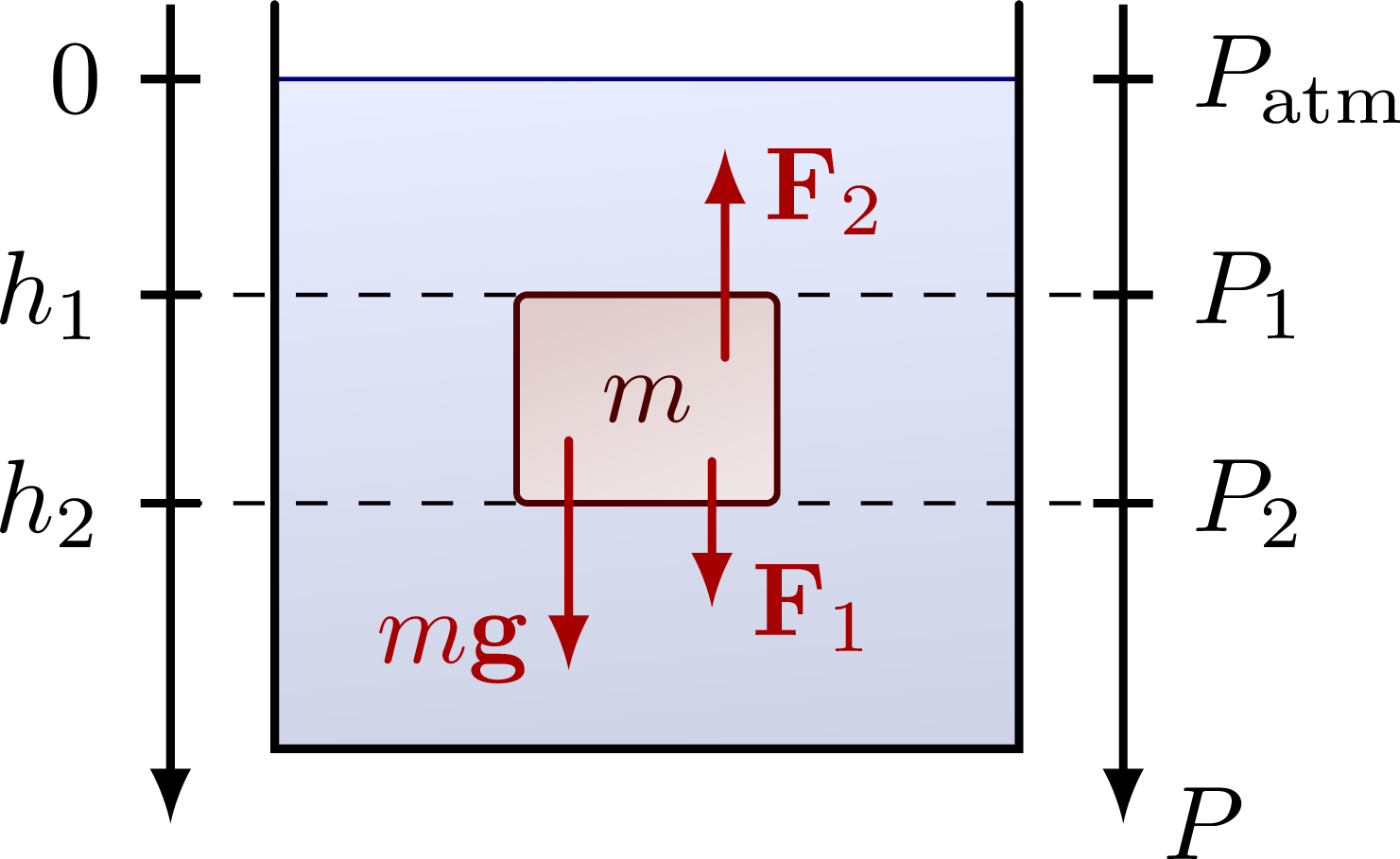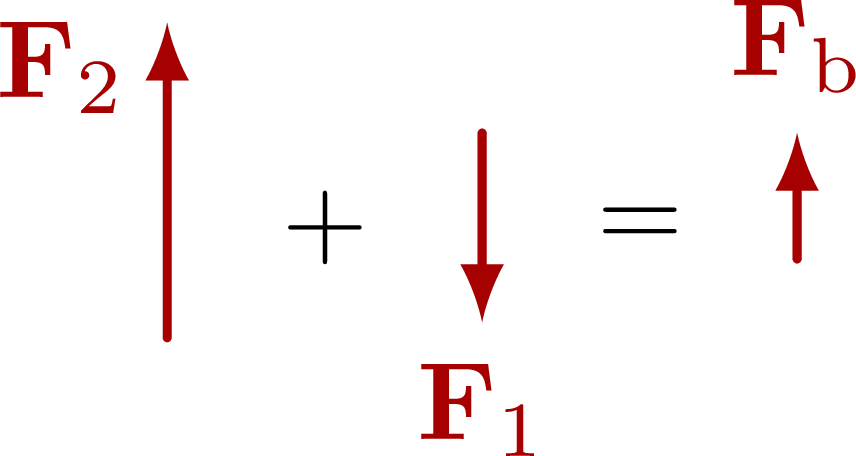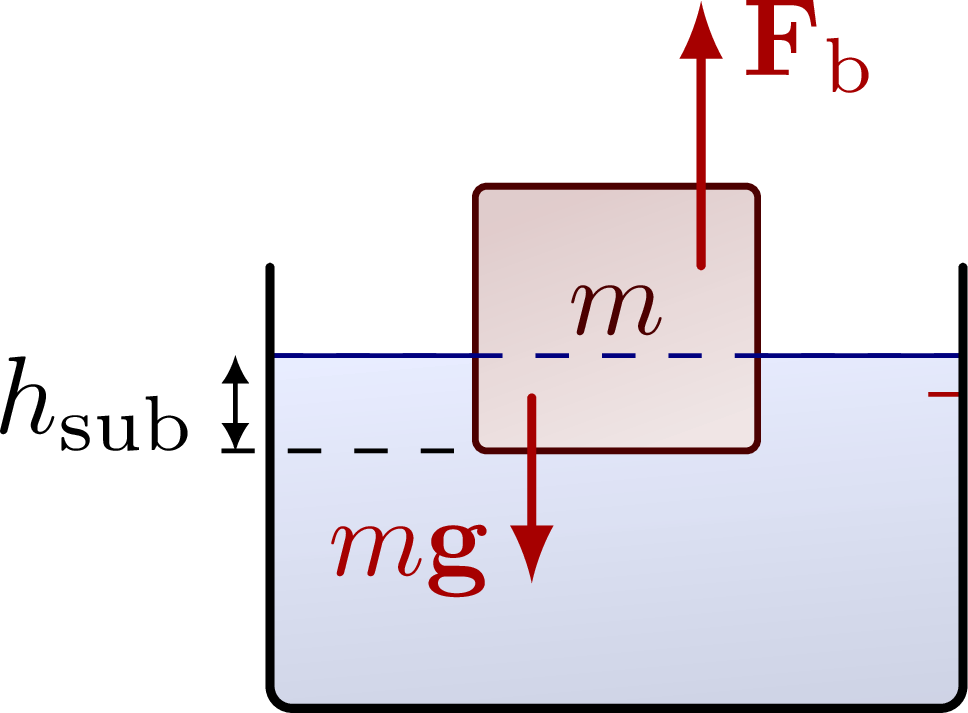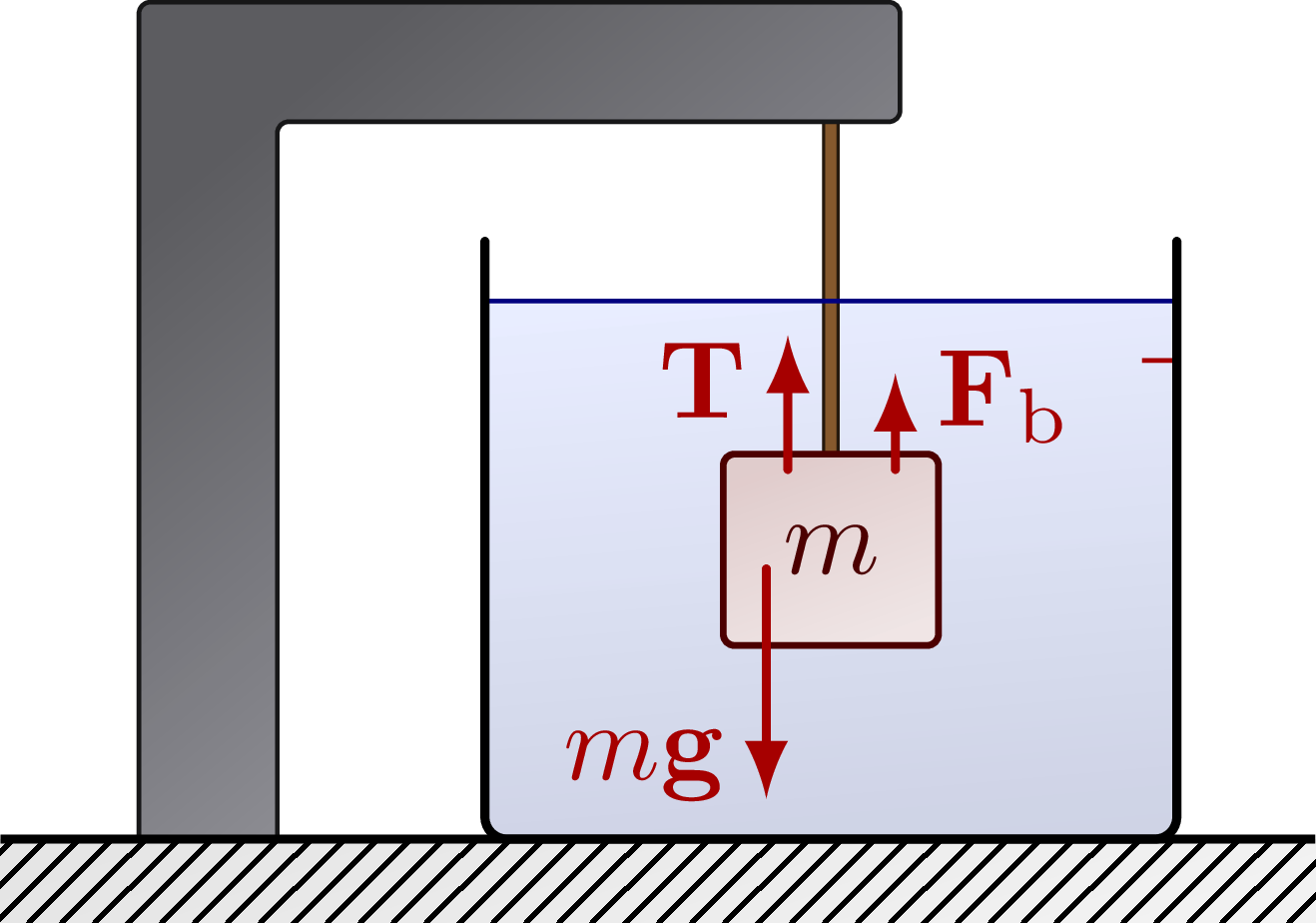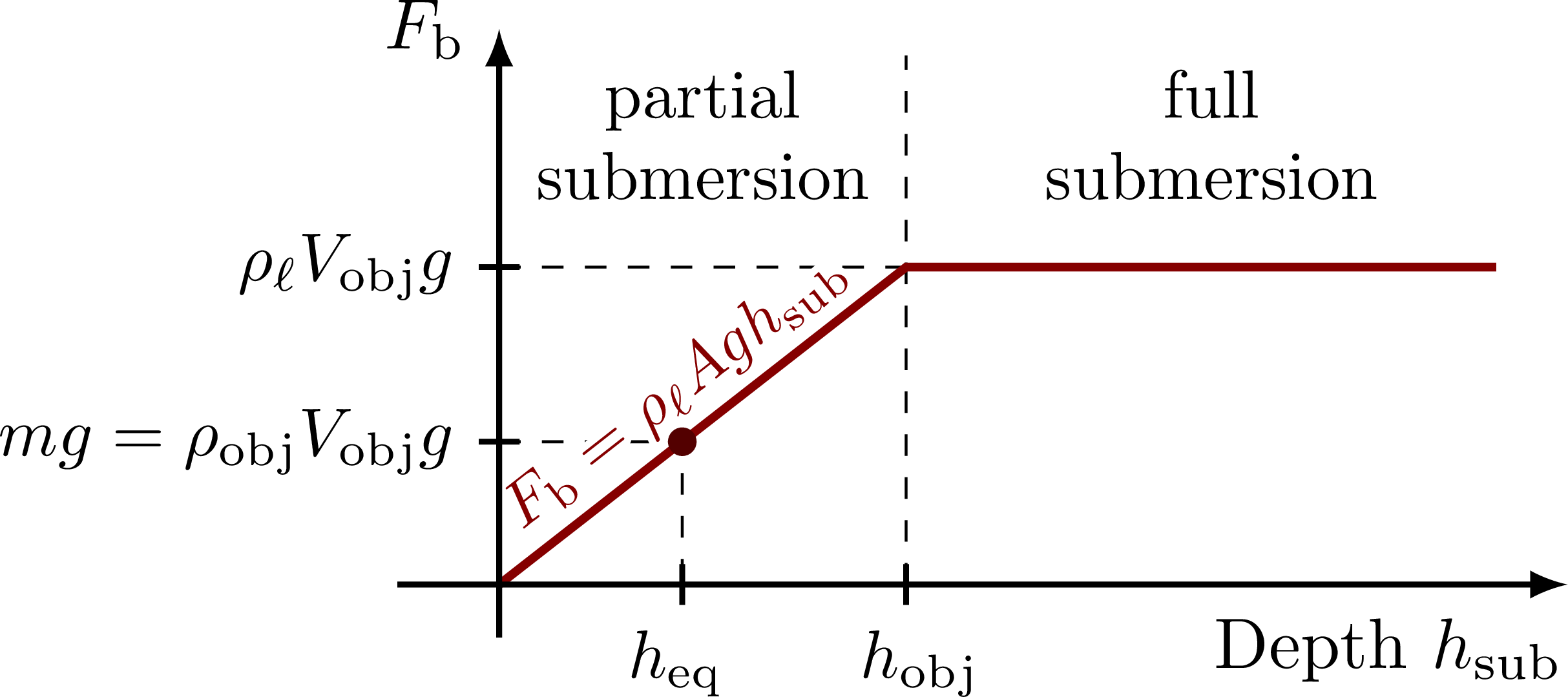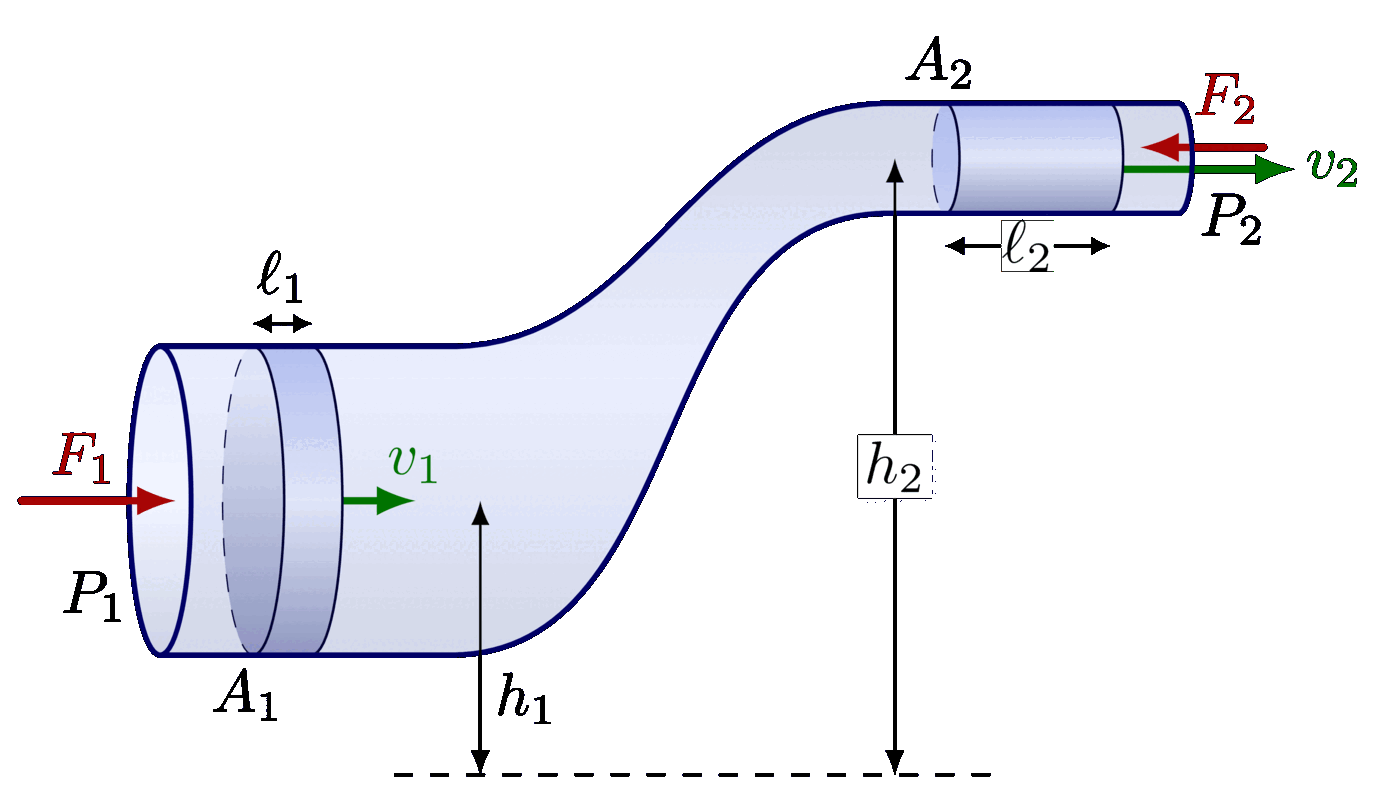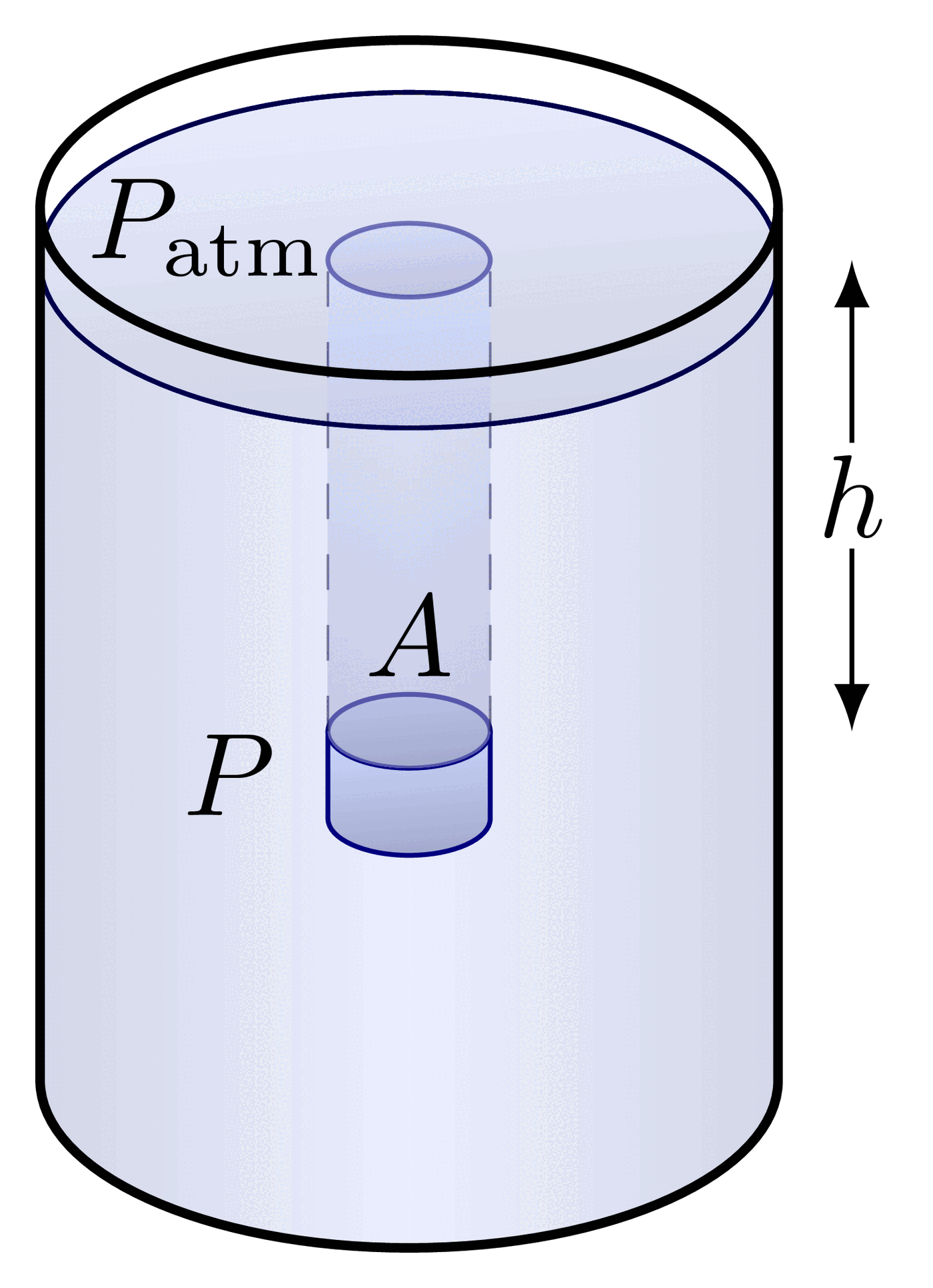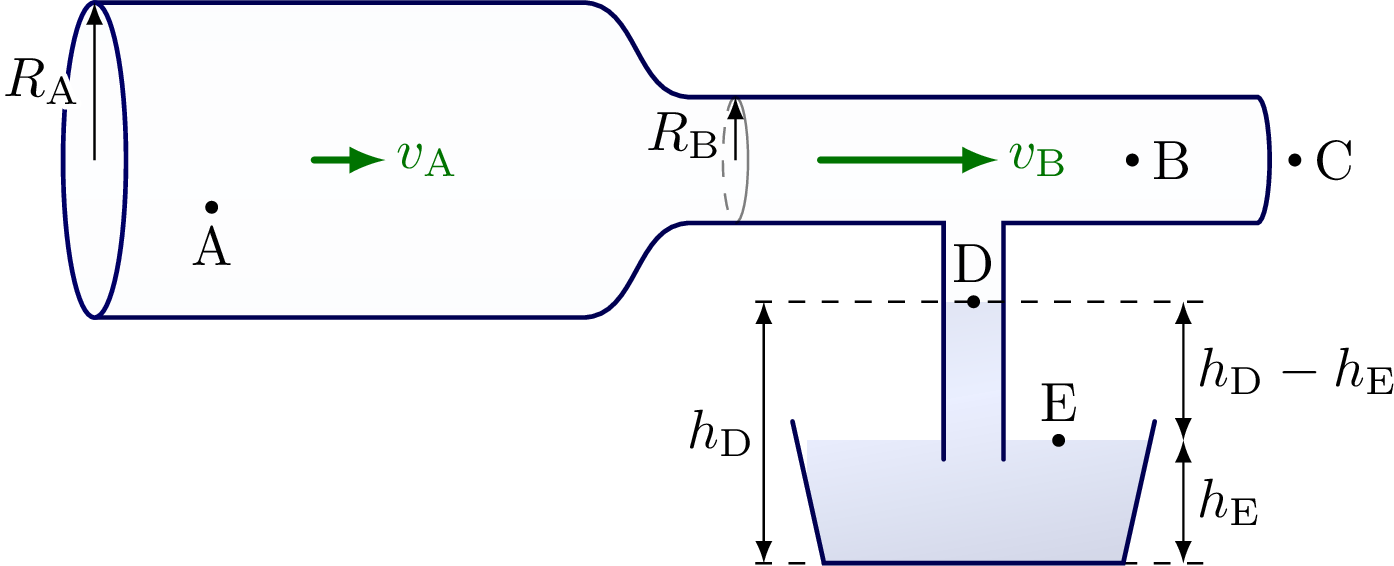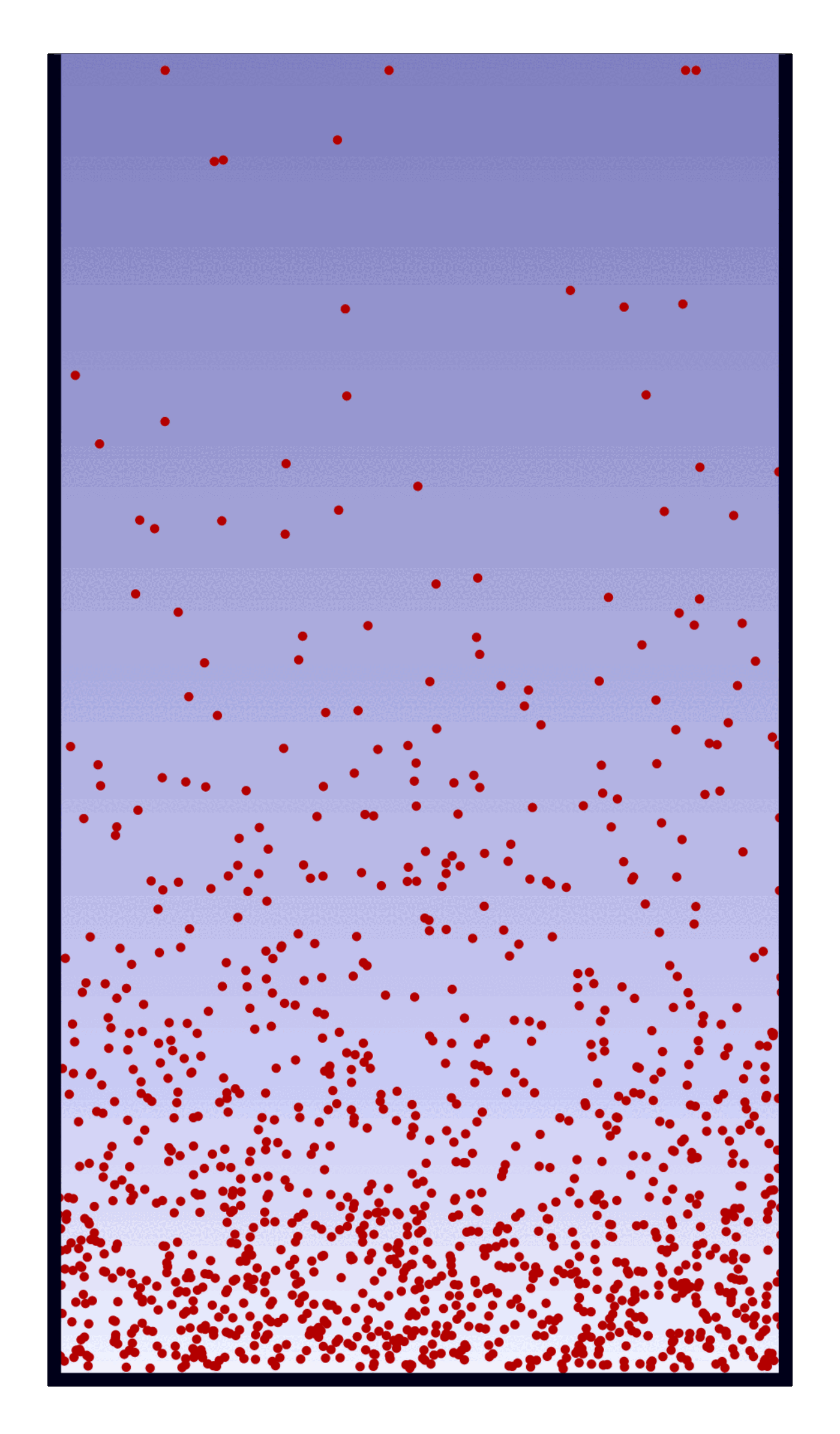Illustrations to explain buoyancy, the buoyant force, Archimedes’ principle.
For more related figures, please have a look at the Fluid Dynamics category.
Edit and compile if you like:
% Author: Izaak Neutelings (November 2020)\documentclass[border=3pt,tikz]{standalone}\usepackage{siunitx}\usepackage{physics}\usepackage{tikz}\usepackage[outline]{contour} % glow around text\usetikzlibrary{patterns,decorations.pathmorphing}\usetikzlibrary{arrows.meta}\tikzset{>=latex}\contourlength{1.1pt}\colorlet{mydarkblue}{blue!50!black}\colorlet{myblue}{blue!30}\colorlet{myred}{red!65!black}\colorlet{vcol}{green!45!black}\colorlet{watercol}{blue!80!cyan!10!white}\colorlet{darkwatercol}{blue!80!cyan!20!white}\colorlet{metalcol}{blue!40!black!10!white}\tikzstyle{force}=[->,myred,very thick,line cap=round]\tikzstyle{vvec}=[->,very thick,vcol,line cap=round]\tikzstyle{ground}=[preaction={fill,top color=black!10,bottom color=black!5,shading angle=20},fill,pattern=north east lines,draw=none,minimum width=0.3,minimum height=0.6]\tikzstyle{mass}=[line width=0.6,red!30!black,fill=red!40!black!10,rounded corners=1,top color=red!40!black!20,bottom color=red!40!black!10,shading angle=20]\tikzstyle{rope}=[brown!70!black,line width=1.2,line cap=round] %very thick\tikzstyle{piston}=[blue!50!black,top color=blue!30,bottom color=blue!50,middle color=blue!20,shading angle=0]\tikzstyle{water}=[draw=mydarkblue,top color=watercol!90,bottom color=watercol!90!black,shading angle=5]\tikzstyle{vertical water}=[water,top color=watercol!90!black!90,bottom color=watercol!90!black!90,middle color=watercol!80,shading angle=90]\tikzstyle{dark water}=[draw=mydarkblue,top color=darkwatercol,bottom color=darkwatercol!80!black,shading angle=5]\tikzstyle{metal}=[draw=metalcol!20!black,top color=metalcol,bottom color=metalcol!90!black,shading angle=10]\tikzstyle{width}=[{Latex[length=3,width=3]}-{Latex[length=3,width=3]}]\tikzstyle{force}=[->,myred,thick,line cap=round]\tikzstyle{Fproj}=[force,myred!40]\newcommand{\vbF}{\vb{F}}\tikzstyle{rope}=[brown!20!black,double=brown!70!black,double distance=1,line width=0.3] %very thick%\def\rope#1{ \draw[black,line width=2.3] #1; \draw[rope] #1; }\def\tick#1#2{\draw[thick] (#1)++(#2:0.1) --++ (#2-180:0.2)}
Click to download: fluid_dynamics_buoyancy.tex • fluid_dynamics_buoyancy.pdf
Open in Overleaf: fluid_dynamics_buoyancy.tex


